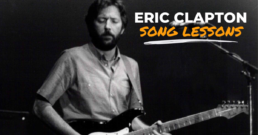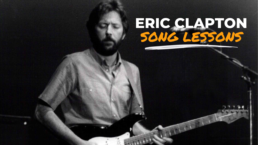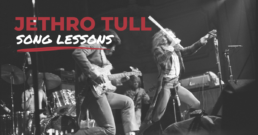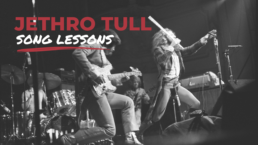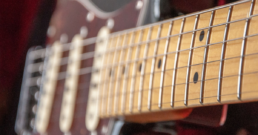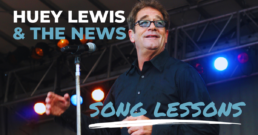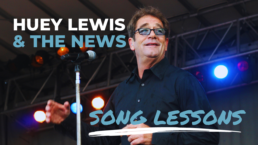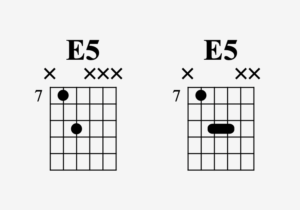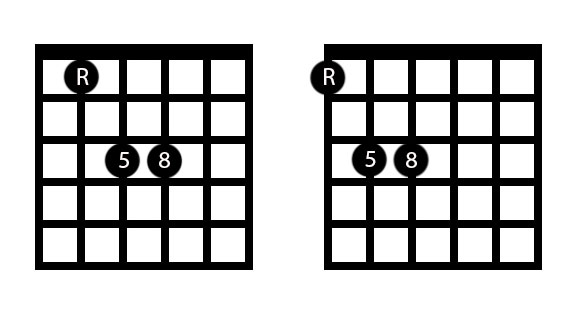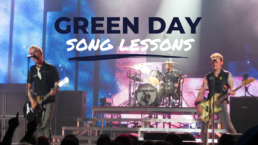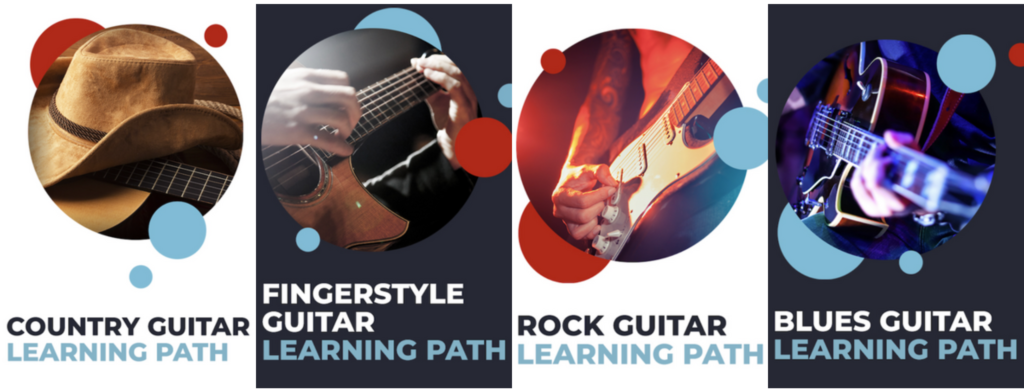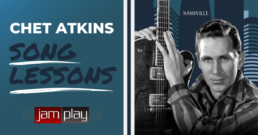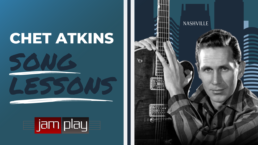SurfyTrem Guitar Pedal Giveaway
SETH ROSENBLOOM & JAMPLAY GIVEAWAY
Win a SurfyTrem Tremolo Guitar Pedal
JamPlay and blues-rock guitarist, Seth Rosenbloom have teamed up to give away the best new addition to your pedalboard: Surfy Industries’ SurfyTrem Tremolo Guitar Pedal. This glorious piece of gear puts the sweet tremolo effects found in 1960s Fender Showman and Blackface amplifiers into a compact stomp box. The SurfyTrem is a go-to pedal for Seth Rosenbloom when switching up sonic textures – whether he’s rockin’ the rhythm or soaring on a blues guitar solo. Enter for your chance to WIN!
Past JamPlay Giveaway Winners
June / July 2022
Squier Classic Vibe Late ’50s Jazzmaster + Supro Delta King 12 15W 1×12″ Combo Amp + UAD Starlight Echo Station
Michael M. from N. Carolina
April 2022
Squier Classic Vibe 60s Thinline Telecaster
Todd F. from Florida
March 2022
Epiphone Slash Les Paul
Greg P. from Minnesota
February 2022
Guild Jetstar
Richard R. from Florida
January 2022
PRS Limited Edition SE P20E Parlor Antique White
Ollie B. from Washington
December 2021
Gretsch guitar, Harmony amp, and pedalboard bundle
Elton V. from North Carolina
November 2021
Fender Jazzmaster and Vox amp
Hannah A. from California
Related Posts
Eric Clapton Song Lesson Playlist
To round off our rock-themed October, we’re going to highlight one of the most influential guitar players to have every lived. Though also classified as a blues artist, Eric Clapton is, without a doubt, one of the most revered rock guitar players in history. Hailing from Surrey, England, Eric Clapton was a founding member of the legendary groups, The Yardbirds, and Cream before embarking on his full-fledged solo career. He is ranked second in Rolling Stone’s list of 100 Greatest Guitarists of All Time, and is the recipient of 18 GRAMMY Awards (among many other awards). Eric Clapton was also made Officer of the Order of the British Empire (OBE) and Commander of the Order of the British Empire (CBE) in 1994 and 2004 respectively. This makes him one high honor away from entering British Knighthood!
Eric Clapton’s widespread influence on the guitar community was proliferated, in part, by his enthralling songwriting. Let’s take a look at some of his hits that you can learn on guitar at JamPlay!
“I’ve Got A Rock ‘n’ Roll Heart” by Eric Clapton – Song Lesson – JamPlay
A single from Eric Clapton’s 1983 album, Money and Cigarettes, “I’ve Got a Rock ‘n’ roll Heart” had two instances of rising to popularity. First, upon its release, the song peaked at No. 18 on the US Billboard Hot 100, and at No. 6 on Billboard’s Adult Contemporary charts. Then, in 2010, the song regained popularity in the from of digital downloads after being used in a T-Mobile ad in which Eric, himself, made an appearance.
The song itself is comprised of a couple different rhythm guitar parts, and a notable lead guitar line. You can get the breakdown of all of these guitar parts in Mark Brennan‘s full song lesson on JamPlay!
“Lay Down Sally” by Eric Clapton – Song Lesson – JamPlay
First released as a single featuring J. J. Cale’s “Cocaine” as a B-side, “Lay Down Sally” was released in 1977 and garnered critical acclaim. Eric Clapton credits his band members, as well as J. J. Cale as inspiration for the country rock style in which the song was written and performed. The song would go on to peak at No. 3 on Billboard’s Hot 100.
“Lay Down Sally” featured a couple interlocking guitar parts that lay the harmonic and rhythmic textures for the song. Learn these parts note-for-note with Callum Bair‘s full song lesson on JamPlay!
“Wonderful Tonight” by Eric Clapton – Song Lesson – JamPlay
“Wonderful Tonight,” like “Lay Down Sally,” was included on Eric Clapton’s 1977 hit album, Slowhand. According to Clapton, he wrote the song about his then-wife, Pattie Boyd as she got ready for Linda and Paul McCartney’s 1976 Buddy Holly Party. The song peaked at No. 16 on the US Billboard Hot 100, and is certified Platinum in the UK.
Featuring some of the prettiest guitar parts Eric Clapton has ever written and recored, “Wonderful Tonight” is a timeless blues ballad. Learn all of the guitar parts as they were recorded with Christian Davis‘ full song lesson on JamPlay!
For more Song Lessons, check out JamPlay.com! JamPlay has over 450 guitar courses from 120+ instructors, and online guitar lessons tailored to every skill level, music genre, and playing style. Click here to learn more.
Share this
Become a JamPlay member for unlimited access to 7000+ guitar lessons and 120+ artists and instructors. View membership plans ›
Related Posts
October 28, 2022
Jethro Tull Song Lesson Playlist
If a rock band stands the test of time, it’s only natural that their sound evolves between albums. Most, however, can’t quite compete with the amount of stylistic shifts made by British rock group, Jethro Tull. One of the main reasons for the band’s ever-evolving nature is that members have always come and gone. The one exception to this is the band’s lead singer, flautist, and acoustic guitarist, Ian Anderson, who has been the band’s only constant member.
Over their career, Jethro Tull’s albums have gone platinum five times, and gold 11 times; the band has sold 60 million records globally. Their 1969 album, Stand Up peaked at No. 1 in the UK. 18 years later, their 1987 album, Crest of a Knave won the band a controversial GRAMMY Award for Best Hard Rock/Metal Performance Vocal or Instrumental.
In this blog, we’ll be highlighting some of Jethro Tull’s hits by featuring a few comprehensive song lessons from JamPlay’s top educators. Let’s dive right in!
“Aqualung” by Jethro Tull – Song Lesson – JamPlay
Although singer and writer, Ian Anderson says that Jethro Tull’s album, Aqualung isn’t a concept album, critics and fans widely regard it as one. The album’s central themes revolve around the division of God and religion. The “Aqualung” character, who is the subject of the album’s title track, is said to have been inspired by a homeless person who Ian Anderson’s wife photographed. This song is one of Jethro Tull’s most played tracks during live performances, and is currently their No 1. song on Spotify.
In this lesson, JamPlay educator, Mark Brennan demonstrates the different guitar parts on “Aqualung” note-for-note. For the breakdown of all the parts, check out Mark Brennan’s full Jethro Tull song lesson on JamPlay.
“Locomotive Breath” by Jethro Tull – Song Lesson – JamPlay
The only song that Jethro Tull plays live arguably more than “Aqualung” is the song, “Locomotive Breath” from the same album. According to lea singer, Ian Anderson, the song’s rhythm is meant to mimic the chugging of a train. The lyrical content of the song is meant to serve as a social commentary about the world’s overpopulation and capitalism.
In this guitar lesson from Dennis Hodges, you’ll learn not only the guitar parts for “Locomotive Breath,” but the transcribed flute solo as well. For the breakdown of this iconic rock song, check out Dennis’ full song lesson on JamPlay.
For more Song Lessons, check out JamPlay.com! JamPlay has over 450 guitar courses from 120+ instructors, and online guitar lessons tailored to every skill level, music genre, and playing style. Click here to learn more.
Share this
Become a JamPlay member for unlimited access to 7000+ guitar lessons and 120+ artists and instructors. View membership plans ›
Related Posts
October 20, 2022
Navigating The Grid
Navigating The Grid
The guitar neck is a grid.
It’s the only instrument that offers so many ways to get to the same place. It’s a little like getting around Manhattan. Even a newcomer could easily find their way from 14th & 2nd to 72nd & 6th once they’ve gotten oriented. To quote a song of my grandfather’s generation, “the Bronx is up and the Battery’s down”. Once you know the layout, you can take any number of routes to the same destination.
Move to a new city and you’ll need to learn your neighborhood and a couple routes to the store. More options appear with time and experience.

On the guitar, maybe that means you can play open chords on the first three frets.
You may have learned how to get to a different area and find a few landmarks. You might know all five shapes of the pentatonic scale by heart, but you might still find it challenging to improvise a coherent solo.
This is the main reason why so much of guitar is memorizing shapes, and why so many people never go past that point. Shapes are great as landmarks and signposts: “you are here”. Music has a shape too, of course, and so skilled players learn to think of the contour of the line rather than the geometry of the neck. This is a direct and mappable relationship, and something that naturally gifted people seem to grasp intuitively.
But it also explains why practicing scales doesn’t teach you to play melody. A scale is a linear gesture: a sequence of notes rising or falling by increments of one letter at a time in most cases. A scale fingering on a guitar is more like hopscotch, or doing the Time Warp (just a jump to the left, and a step to the right…).

To a beginner, there’s nothing linear and straightforward about a scale fingering on guitar.
By contrast, most people can easily grasp how to plink out do-re-mi on a piano: Find the white key C, then the next white key to the right, and do it again. Right is up, left is down. A guitar is both upside down AND backwards in comparison before we even consider crossing strings.
But a guitar is just as linear if you stay on one string. Frets provide measurable increments: one fret a half-step, two frets a whole step, and so forth. Start paying attention to distance on a single string. The scale box is one option, but anywhere along the way you can choose to just move along the same string. If you are learning scales, great! Keep doing it. There are a variety of reasons why it’s worth your while. But practice contour and line also.
A great way to do this is to learn simple melodies in different places around the guitar. Nursery rhymes, jump rope rhymes, your alma mater’s fight song, or the first ten pages of that old Mel Bay book you might have laying around. Most will use just a few notes, so we can concentrate on the line itself.
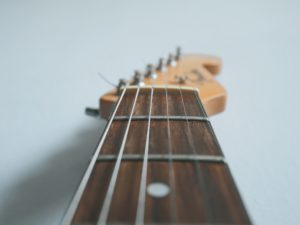
Try this exercise:
Touch any string at the fourth fret. Play that note, then sing it. Then sing the word “three”, and see if you can find the first three notes of “Three Blind Mice”.
I’m going to predict that once you’ve done this a couple of times, that fourth fret note is going to sing out “THREE…” and you won’t be able to un-hear it. That’s the point. We just put a dot on the map, and noted a particular relationship: a major third from an open string.
But if you prefer to call it the Three Blind Mice note, that’s ok too. The point is to hear that particular relationship between two notes, and to see a pattern rather than two discrete locations.
You can extend this exercise to any musical gesture. Moving left, right, up, or down on a guitar neck produces a predictable result. You can connect that visual shape to a sound.
These patterns are consistent across the neck, with an adjustment for the second string because of the major 3rd between the G and B strings. There may be numerous options, but the interval shapes and scale boxes ARE finite.
The element that opens those boxes into infinite possibilities is melody. Following a musical line lets you connect smaller segments of a scale instead of just cycling the sequence. Focusing on up and down and the “shape” of a melody helps you phrase, because it organizes the musical ideas.
Interested in learning to solo on guitar? Check out JamPlay.com. JamPlay has over 450 guitar courses from 120+ instructors, and online guitar lessons tailored to every skill level, music genre, and playing style. Click here to learn more.
Dave Isaacs has established himself as a guitar teacher extraordinaire, having built a strong set of educational curriculums for beginner, intermediate, and advanced guitar players alike. Dave shares his expertise largely through video platforms, but also through his thoughtful writing. You can take guitar lessons from Dave Isaacs via his comprehensive video guitar courses on JamPlay.com.
Share this
Become a JamPlay member for unlimited access to 7000+ guitar lessons and 120+ artists and instructors. View membership plans ›
Related Posts
Huey Lewis & The News Song Lesson Playlist
The 1980s and 1990s proved to be a monumental time for popular music. Much of the contemporary arrangement styles and production techniques were exploited to extremes, lending to the proliferation of the musical hallmarks we associate with the past 40 years. One of the bands that burgeoned during this period was none other than Huey Lewis & The News: a new wave, blue-eyed soul band from San Francisco that had a thing or two to prove! Through extensive touring, charismatic performances, and a couple of globally successful albums, Huey Lewis & The News’ music would appear in Hollywood movie soundtracks, and earn the band some of the most prestigious award nominations one could ever dream of.
In this blog, we’ll be showcasing some of JamPlay’s intuitive guitar lessons that teach you how to play some of Huey Lewis & The News’ most notable songs. Let’s dive in and learn some classic hits!
“Heart Of Rock ‘N’ Roll” by Huey Lewis & The News – Song Lesson – JamPlay
In this song lesson, JamPlay educator Callum Bair demonstrates the guitar parts for “Heart of Rock ‘N’ Roll” by Huey Lewis & The News. This song was the third single representing the band’s most popular album, Sports. It peaked at No. 6 on the US Billboard charts, and is said to have been inspired by a show the band played in Cleveland, Ohio!
The song consists of a few guitar parts that serve its different sections, and intertwine to form its notoriously infectious groove. For the breakdown of all of the parts, check out Callum Bair’s full song lesson on JamPlay!
“Hip To Be Square” by Huey Lewis & The News – Song Lesson – JamPlay
If you’ve ever seen the 2000 film, American Psycho, or have read the book on which the movie is based, you probably are very familiar with this one! In both the film and the novel, “Hip To Be Square” is verbally critiqued by the serial-killing protagonist, Patrick Bateman, during which he commits one of his slayings. Aside from publicity from the novel and film feature, this song was critically acclaimed and peaked at No. 3 on Billboard’s Hot 100.
“Hip To Be Square” features a memorable rock ‘n’ roll riff that’s perfect for some crunchy distortion. The original recording also presents some horns parts. But in this lesson, JamPlay educator, Chris Liepe shows you how to play those parts on guitar instead. For the note-by-note breakdown, check out Chris’ full song lesson on JamPlay!
“I Want a New Drug” by Huey Lewis & The News – Song Lesson – JamPlay
Opening with a guitar slide that was meant to honor the late Jimi Hendrix, “I Want a New Drug” is an ear-grabbing, new wave rock ‘n’ roll anthem about love. Legend has it that Huey Lewis wrote this song in under an hour at his attorney’s office. Peaking at No. 6 on Billboard’s Hot 100, this track was later covered by parody artist, Weird Al Yankovic.
If you like rock guitar, you’ll love learning this song. It features crunchy rock riffs, jangly rhythm parts, and some searing lead guitar melodies. For the full “I Want a New Drug” guitar lesson, check out Callum Bair‘s lesson on JamPlay.
“The Power of Love” by Huey Lewis & The News – Song Lesson – JamPlay
Undoubtedly Huey Lewis & The News’ most notable track, “The Power of Love” was the band’s first No. 1 hit on the US Billboard Hot 100. And this success didn’t come solely from the songs catchiness! Huey Lewis wrote this song as part of a contract with the creators of the blockbuster sci-fi movie, Back To The Future. In the film, main character, Marty McFly’s favorite band is Huey Lewis & The News. “The Power of Love” is the movie’s theme song, and is covered by Marty’s band as part of the film’s plot.
Learning the guitar parts for this song can only be described as rewarding. The distorted rock riffs in this song are amongst some of the most memorable from the 1980s. Learn the whole song with D.J. Phillips‘ full guitar lesson on JamPlay!
“Working For a Living” by Huey Lewis & The News – Song Lesson – JamPlay
“Working For a Living” is an uptempo rock single that appeared on Huey Lewis & The News’ 1982 LP, Picture This. Peaking at No. 20 on Billboard’s Mainstream Rock charts, the song is said to be about Huey Lewis’ real-life career positions before the success of his band.
In this song lesson from Chris Buono, you’ll have the chance to learn the song note-for-note as it appears on the album. He also presents an easy strum along version of the lesson for beginner-level rock guitar players. For the entire breakdown, check out Chris Buono’s full song lesson on JamPlay!
For more Song Lessons, check out JamPlay.com! JamPlay has over 450 guitar courses from 120+ instructors, and online guitar lessons tailored to every skill level, music genre, and playing style. Click here to learn more.
Share this
Become a JamPlay member for unlimited access to 7000+ guitar lessons and 120+ artists and instructors. View membership plans ›
Related Posts
October 14, 2022
Get More Power From Your Power Chords!
Get More Power From Your Power Chords!
Power chords are part of the backbone of rock guitar.
Tony Iommi’s epic, lumbering sludge on “Iron Man,” and Ritchie Blackmore’s iconic grind on “Smoke On The Water” have been first steps for three generations of players. Malcolm Young’s riffs drove AC/DC into musical history, and James Hetfield’s machine-like right hand is essential to Metallica’s power.
We find power chords in more places than in the obvious heavy rock setting. But first, let’s look at why those simple forms create so much, well, power.
The term “power chord” is sometimes used to refer to the main movable barre chord forms like the six note “E-shape” and four or five-note “A shape”: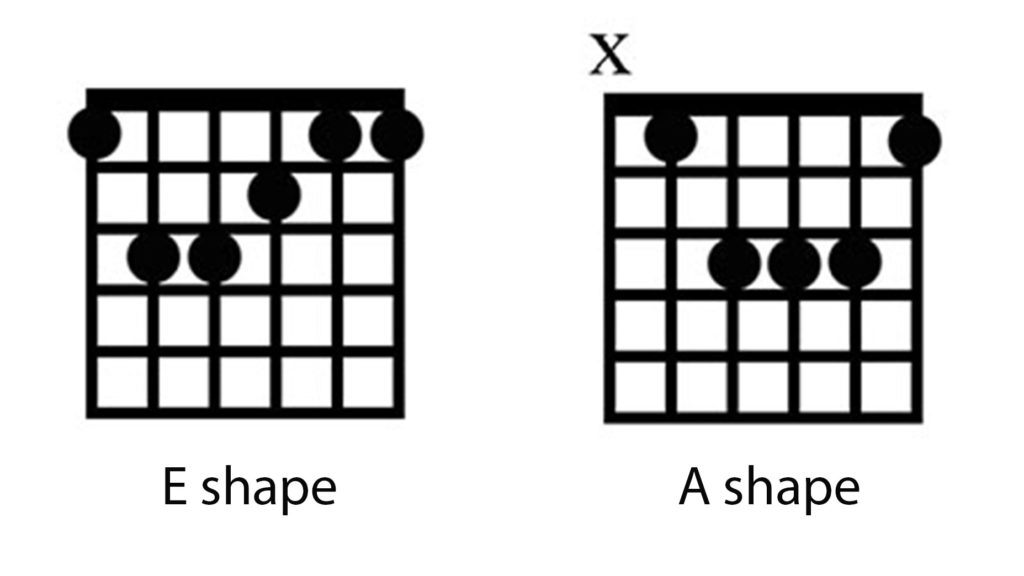
But, because these are major chords, they belong in a different category. To make the distinction clear, let’s say power chords are the familiar two- or three-note shapes we see so frequently in hard rock.
We’re going to call the two-note formation a perfect 5th, or just “fifth” for short. That means that if you take the lower sounding of the two notes and call it the first note of a major scale, the upper note will end up being note number 5 in the sequence. Sounded together, these two notes a 5th apart create our basic power chord. Adding the third note on the next string doubles the starting note an octave higher.
Making these distinctions between types of chords might be the most compelling reason for learning some basic music theory. Sounds can fall into categories based on their sonic quality. There’s math that corresponds, but that’s not the part musicians use in real time. If you think of music theory as a method to give names to different sounds, all we’re really doing is putting labels on your toolbox.
Keep in mind that these labels identify categories of sound, not just shapes!
We already know we can play the same notes in multiple places. If we add more roots or fifths, it doesn’t change the chord’s name. The following chords could all be labeled E5, and notice how while the sound is obviously different the tonal quality or color is similar.
If you compare the sound of any of these to a familiar open E, the difference is obvious. Adding the major 3rd, G# changes the character of the sound to something richer and warmer. Returning to the E5, the sound is more open, with a natural bite and grind regardless of the shape. This is the sound we’re so familiar with, especially sliding that two-note form around:
If we reverse the two-note E5 and put the root note on top, we get a different, darker sort of grind. We’ve inverted our 5th and created a fourth.
Here’s where we have to be clear about something. Context is important in how we name things. Our understanding of a note is colored by the notes that surround it. So we can refer to the distance between two notes on the scale or the fretboard, and name the distance. In this case, four scale steps creates a fourth. BUT, in the context of the chord and key of E, the same two notes are still the root and the fifth if we name them individually.
Got it? If not, don’t fear. You can see and hear the difference. Here is the same basic riff in fifths and then in fourths. Keep in mind the letter names are the same, and so is the name of the chord.
 If your head hurts a little, it’s ok. Here are some classic examples of power chord riffs that use 5th or 4ths. Start listening for the difference and you’ll hear it.
If your head hurts a little, it’s ok. Here are some classic examples of power chord riffs that use 5th or 4ths. Start listening for the difference and you’ll hear it.
Black Sabbath, “Iron Man” – 5ths
Deep Purple, “Smoke On The Water” – 4ths
Judas Priest, “Living After Midnight” – 5ths
Rainbow, “Man On The Silver Mountain” – 4ths
This might be more than you ever thought you needed to know about the humble workingman’s power chord.
But, wait, there’s still more!
This example might be called “melodic power chords”. Sliding one finger down from the E root of our E5 creates a new interval and a new chord. In this case, our two-note interval gives us two of the three notes of a B major chord. Combined with 5ths, this new chord creates a smooth, melodic transition. This sound became popular in the late 70’s and early 80’s; check out Glen Tilbrook’s cool chunky rhythm playing in Squeeze hit “Nail In My Heart”, or the anthemic opening riff of .38 Special’s “Hold On Loosely”.
Still got room for one more? Double the root and raise it a step, creating an add9 chord. The most famous examples of this form come from The Police’s Andy Summers on songs like “Message In A Bottle” and “Every Breath You Take”, and it’s a cool substitute for a standard sliding form.
This kind of thinking can open the door to all sorts of new sounds: take a familiar shape and change one note. If you can connect the theory to categorize the sounds, great. If not, just listen for tone color, vibe, and atmosphere. This is what intuitive players do, and besides, the math makes a lot more sense when attached to a sound.
Interested in learning to solo on guitar? Check out JamPlay.com. JamPlay has over 450 guitar courses from 120+ instructors, and online guitar lessons tailored to every skill level, music genre, and playing style. Click here to learn more.
Dave Isaacs has established himself as a guitar teacher extraordinaire, having built a strong set of educational curriculums for beginner, intermediate, and advanced guitar players alike. Dave shares his expertise largely through video platforms, but also through his thoughtful writing. You can take guitar lessons from Dave Isaacs via his comprehensive video guitar courses on JamPlay.com.
Share this
Become a JamPlay member for unlimited access to 7000+ guitar lessons and 120+ artists and instructors. View membership plans ›
Related Posts
Green Day Song Lesson Playlist
Calling all millennials! Do you remember when alternative and punk rock was synonymous with pop culture? Well, you can partially owe those fond memories to international superstars, Green Day. Hailing from East Bay, California, Green Day is one of the most influential punk rock bands of all time. They have sold over 75 million records globally, earned themselves a place in the Rock and Roll Hall of Fame in 2015, have won 5 GRAMMY Awards (nominated for 20), and are ascribed as one of the driving forces behind the mainstream popularity of punk rock music.
Today, we’re looking at some of the songs that made them famous. Check out these Green Day song lessons from JamPlay’s top educators!
“Good Riddance (Time of Your Life)” by Green Day – Song Lesson – JamPlay
In this song lesson, JamPlay educator Chris Buono shows you how to play one of Green Day’s biggest (if not the biggest) hits of all time, “Good Riddance (Time of Your Life).” Apparently, singer, Billie Joe Armstrong wrote this song to chronicle his disappointment when his then-girlfriend moved away to Ecuador. Since its release, it has broken the top 20 charts in five countries, gone certified Platinum in the UK, and become one of the most played high school graduation songs of all time.
The song’s arrangement includes one acoustic guitar, Billie Joe Armstrong on vocals, and a strings section. The rhythm of the acoustic guitar is paramount to the performance of this song, and is one of its identifying features. To see a full breakdown of how to play this song on guitar, check out Chris Buono’s “Good Riddance (Time of Your Life)” song lesson on JamPlay!
“Basket Case” by Green Day – Song Lesson – JamPlay
Green Day’s “Basket Case” debuted as a single from their 1994 full-length album, Dookie, and spent five weeks as No. 1 on the Alternative Charts in the US. It would ultimately go on to earn a nomination for Best Rock Vocal Performance by a Duo or Group in the 1995 GRAMMY Awards. This is one of the songs that put Green Day “on the map” in terms of global popularity.
This song is tuned to E flat, so you’ll have to tune your guitar down a half step! For the full breakdown where Chris Buono shows you how to play this song note-for-note, check out his “Basket Case” song lesson on JamPlay!
For more Song Lessons, check out JamPlay.com! JamPlay has over 450 guitar courses from 120+ instructors, and online guitar lessons tailored to every skill level, music genre, and playing style. Click here to learn more.
Share this
Become a JamPlay member for unlimited access to 7000+ guitar lessons and 120+ artists and instructors. View membership plans ›
Related Posts
October 7, 2022
JamPlay's Learning Paths - The Best Way to Learn Guitar
When it comes to learning guitar, online resources have never been more robust! And here at JamPlay, we’ve got thousands of incredible guitar, bass, and song lessons across every genre and skill level available. But the eternal question still remains… where do I begin? Well, JamPlay finally has an answer.
Introducing: JamPlay’s Learning Paths – a linear, step-by-step approach to learning guitar regardless of your skill level. What’s different about our approach? Allow us to show you!
What are Learning Paths?
Put simply, Learning Paths are progressive curriculums made from carefully selected guitar courses that have been arranged in “paths” that will keep you on track as you learn guitar! Each one is specific to a genre, and starts you off with courses that teach the most fundamental skills for that genre. Each subsequent course builds on the previous one’s teachings, adding new tools to your toolbox as you go.
This first set of Learning Paths includes Blues, Rock, Country, and Fingerstyle. Let’s look at the Blues Learning Path as an example for what to expect!
How it all works…
Each Learning Path is divided up into three stages, each more advanced than the last. This way, you’ll be able to find your place along the path with ease. As you can see in this first Blues Learning Path stage, you’ll start with the very basics: tuning your strings properly, how to hold a guitar, playing your first notes. Then…
The next courses focus on how to play chord progressions, basic rhythms, essential scales, and solo-worthy melodies. When you’re progressing though the courses, it’s important to get these core skills under your fingers. They’ll come in handy when moving on to more advanced sections.
When you’re done with Stage 1, you’ll move on to Stage 2 where you’ll really apply your newfound guitar knowledge. This section is perfect for intermediate guitar players. So, if you’ve already got a grip on the basics, this section is a great place to start! Stage 2 is also where the lessons will delve further into the details; you’ll learn guitar skills and techniques that are specific to the genre you are studying.
Moving on, Stage 3 is designed to challenge both late intermediate and advanced guitar players. Just as you built upon your fundamental skills in Stage 2, you’ll take those lessons and really put them to the test in Stage 3. By the end of this section, you’ll be more than ready for the stage. You’ll understand advanced techniques, be able to play rhythms across multiple keys, and be comfortable with improvising lead melodies. Sounds exciting, right? Wait until you see the other features Learning Paths have in store!
Other great Learning Path features:
Learning Paths also offer Chord and Scale Libraries…
Huge selections of Jam Tracks and Lick & Riff examples for you to play along with…
And intuitive progress tracking, so you can visualize the strides you make every time you take a step down the path.
So, what are you waiting for? Learn guitar the right way! The version of you who plays like your favorite guitar heroes is just at the end of a JamPlay Learning Path. Click here to learn more.
Interested in improving your guitar playing? Check out JamPlay.com! JamPlay has over 450 guitar courses from 120+ instructors, and online guitar lessons tailored to every skill level, music genre, and playing style. Click here to learn more.
Share this
Become a JamPlay member for unlimited access to 7000+ guitar lessons and 120+ artists and instructors. View membership plans ›
Related Posts
October 7, 2022
Tony Martinez's Turning Pentatonics Into Music Guitar Course
One of the first steps of learning guitar is discovering all of the scales that will be useful to you. Arguably the most important amongst these are the Major and Minor Pentatonic scales. So, you might have already practiced these particular scales A LOT! But, playing scales doesn’t really translate to playing music.
In his course, Turning Pentatonics Into Music, JamPlay educator, Tony Martinez shows you how to transform your Pentatonic scale recitals into performance-worthy playing. Let’s check out some samples from the course!
About the Course:
Playing a lot of notes, or playing really fast, are not skills that are essential to playing musical-sounding solos, riffs, or licks. Using pentatonic scales, with the help of some extra notes, expressive techniques, and tasteful rhythm can be the best way to perform melodic ideas. Join Tony Martinez in his step-by-step approach to playing more musically!
Try out a pentatonic guitar lesson from the course!
In this guitar lesson from Tony Martinez, you’ll learn about “root” notes. The root of a scale or key is the note on which the scale or key starts and ends, and is usually notated as “1,” “one,” “i,” or “I.” Watch how Tony uses the root note to finish musical “conversations.”
For more lessons, check out Tony Martinez’s Turning Pentatonics into Music guitar course on JamPlay!
For more music theory guitar lessons and an ever-growing library of Song Lessons, check out JamPlay.com! JamPlay has over 450 guitar courses from 120+ instructors, and online guitar lessons tailored to every skill level, music genre, and playing style. Click here to learn more.
Share this
Become a JamPlay member for unlimited access to 7000+ guitar lessons and 120+ artists and instructors. View membership plans ›
Related Posts
October 4, 2022
Chet Atkins Song Lesson Playlist
In one of our recent blog posts, we talked about Willie Nelson, who was at the forefront of the “outlaw Country” movement. Outlaw Country, as a genre, countered the imposing standards set by the increasingly popular “Nashville sound” of the 1950s. For reference, the Nashville sound was the more pop-infused successor of honky-tonk which strove to reinvigorate people’s interest in Country music. Today, in contrast, we’re highlighting one of the pioneers of the Nashville sound: Chet Atkins. Even if you are not familiar with his name, you’ve almost certainly heard a Chet Atkins song or arrangement. His recordings have been used in commercial work for half a century!
Chet Atkins is revered as one of history’s greatest guitar players (ranked No. 21 on Rolling Stone’s 100 Greatest Guitarists). He was best known for the breadth of his influence on Country music, and his distinct flavor of fingerstyle guitar playing. Chet’s style of playing was largely influenced by his lifelong idol, Merle Travis, and usually includes an alternating-thumb bass line played in conjunction with chordal melodies.
During his 54 year career, Chet Atkins produced records for big names like Elvis Presley, Dolly Parton, and Jerry Reed. He also served as inspiration for subsequent guitar legends such as Tommy Emmanuel and George Harrison. Chet won 14 GRAMMY awards (not including his GRAMMY Lifetime Achievement Award) and nine CMA Awards. These achievements are amongst many other of Chet’s impressive accolades. Most importantly, however, Chet is remembered for his music; his songs and unique arrangements are true compositional marvels. Let’s take a look at a few Chet Atkins song lessons you can take at JamPlay!
“Stephen Foster Medley” – Chet Atkins
Chet Atkins’ “Stephen Foster Medley” was his ode to the late songwriter, Stephen Foster (1826-1864), who is known as the “father” of American music. The three songs comprising this medley are “Massa’s in de Cold Ground,” “Nelly Bly,” and “Camptown Races.” The whole composition is played in open G tuning, and features a steady, alternating-thumb pattern.
In this video, JamPlay educator, Jim Deeming performs this Chet Atkins song in its entirety. For the breakdown of the song, check out Jim’s full lesson on JamPlay!
“Windy and Warm” – Chet Atkins
As the story goes, Chet Atkins was recording a decent amount of jazzy compositions during the 1950s. But there came point when Chet was interested in getting back into playing more Country-oriented songs. So, a songwriter named John Loudermilk wrote “Windy and Warm” specifically for Chet Atkins to perform!
Here, Jim Deeming performs “Windy and Warm” all the way through. For the full Chet Atkins song lesson, check out Jim’s course on JamPlay.
“Yankee Doodle Dixie” – Chet Atkins
As Jim Deeming mentions in this video lesson, this Chet Atkins song arrangement is a mashup of both “Yankee Doodle” and “Dixie.” Yes, you read that right! This mashup was originally performed by ‘Blind Tom’ Wiggins in the late 19th century, who played “Fisher’s Hornpipe” and “Yankee Doodle” simultaneously on piano while he sang “Dixie.” Chet Atkins is the first musician to have adapted the song for fingerstyle guitar.
To get the full breakdown with tab of this song, check out Jim Deeming’s course on JamPlay!
For more Song Lessons, check out JamPlay.com! JamPlay has over 450 guitar courses from 120+ instructors, and online guitar lessons tailored to every skill level, music genre, and playing style. Click here to learn more.
Share this
Become a JamPlay member for unlimited access to 7000+ guitar lessons and 120+ artists and instructors. View membership plans ›
Related Posts
September 22, 2022



